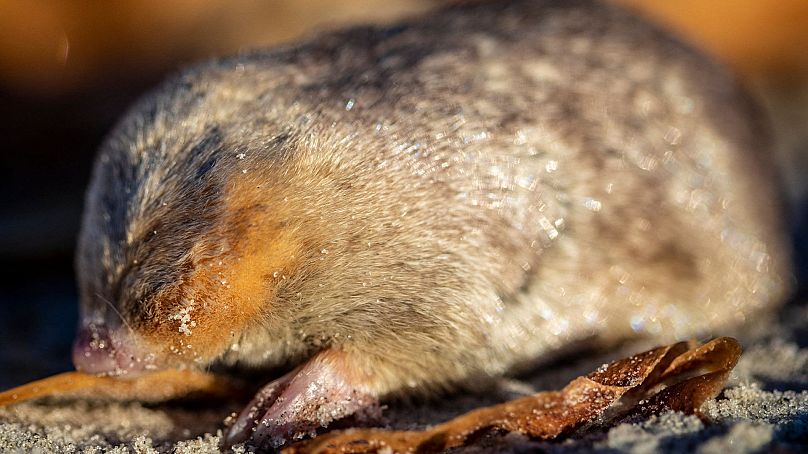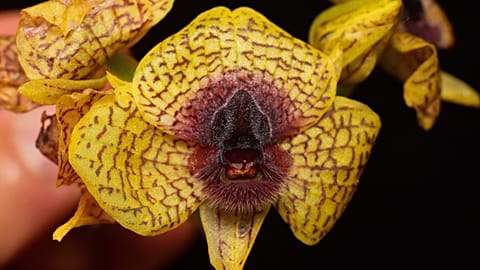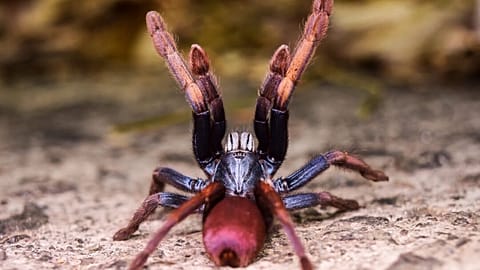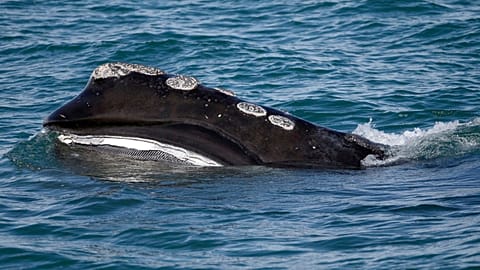The team described the hunt to find the mole as 'more exciting' than an episode of CSI.
A blind mole that ‘swims’ in the sand has been found in South Africa, more than 80 years after the species was lost to science.
The critically endangered De Winton’s golden mole was rediscovered by a team of conservationists and geneticists from the Endangered Wildlife Trust (EWT) and the University of Pretoria.
It is the 11th of the world's most sought-after lost species to be rediscovered since the Global Wildlife Conservation’s Search for Lost Species initiative was launched in 2017.
A quest for something ‘far more precious than gold’
In 2020, the EWT embarked on a quest through the drylands of the Northern Cape in search of “something far more precious than gold”: the De Winton’s golden mole.
Hopes of finding the mole - which is named for its iridescent sheen - were “almost as transient as the mist that passes through the dunes of the West Coast”, the South African NGO said at the time.
Last seen in 1937, it was considered a ‘lost species’, a term that includes those that have been lost to science for at least 10 years - and often much longer.
Dune dwelling moles are particularly tricky to find or trap as they rarely leave tunnels that are visible from the surface and their burrows are largely inaccessible. Their keen sense of hearing means they can detect vibrations from movement above ground, further helping them evade detection.
De Winton’s mole is also often confused with Grant’s golden mole, which occupies similar environments.
‘Much more exciting than an episode of CSI’: eDNA used to trace the mole
Teaming up with the University of Pretoria and scent-detection border collie Jessie, the EWT piloted an innovative environmental DNA (eDNA) technique - typically used in aquatic environments - to assist in its mission.
Meticulously sifting through sand samples from the dunes near Port Nolloth, they searched for trace amounts of DNA from skin cells, hair, blood and faecal droppings shed by the mysterious moles.
“No, this isn’t an episode of CSI, but it’s much more exciting,” EWT wrote ahead of the mission.
They began at the site where the moles were last seen more than 80 years ago. Collecting more than 100 soil samples, the team surveyed up to 18 kilometres of dune habitat each day.
“Finding De Winton’s golden mole would be a beacon of hope for conservationists - indicating that hidden wonders still wait to be discovered,” EWT said at the time.
With DNA sequencing, thermal imaging, and Jessie’s well-trained nose, the team determined that there were several species of golden mole living in the test area.
Among these, they eventually detected De Winton’s golden mole, along with Van Zyl’s golden mole - another endangered and rare species.
“Now not only have we solved the riddle, but we have tapped into this eDNA frontier where there is a huge amount of opportunity not only for moles, but for other lost or imperilled species,” says Cobus Theron, senior conservation manager for EWT and a member of the search team.
The expedition and research project was sponsored by nonprofit Re:Wild and IUCN Save Our Species, and co-funded by the European Union.
Why is De Winton’s golden mole critically endangered?
There are 21 species of golden moles, most of which only live in South Africa.
De Winton's golden mole is especially at threat because its small natural habitat is being encroached on by large-scale diamond mining.
As the team continues its search for more specimens, it aims to increase community awareness of the species, encouraging them to report sightings and support conservation efforts.
These include formally securing the mole’s known habitats through biodiversity stewardship.



















